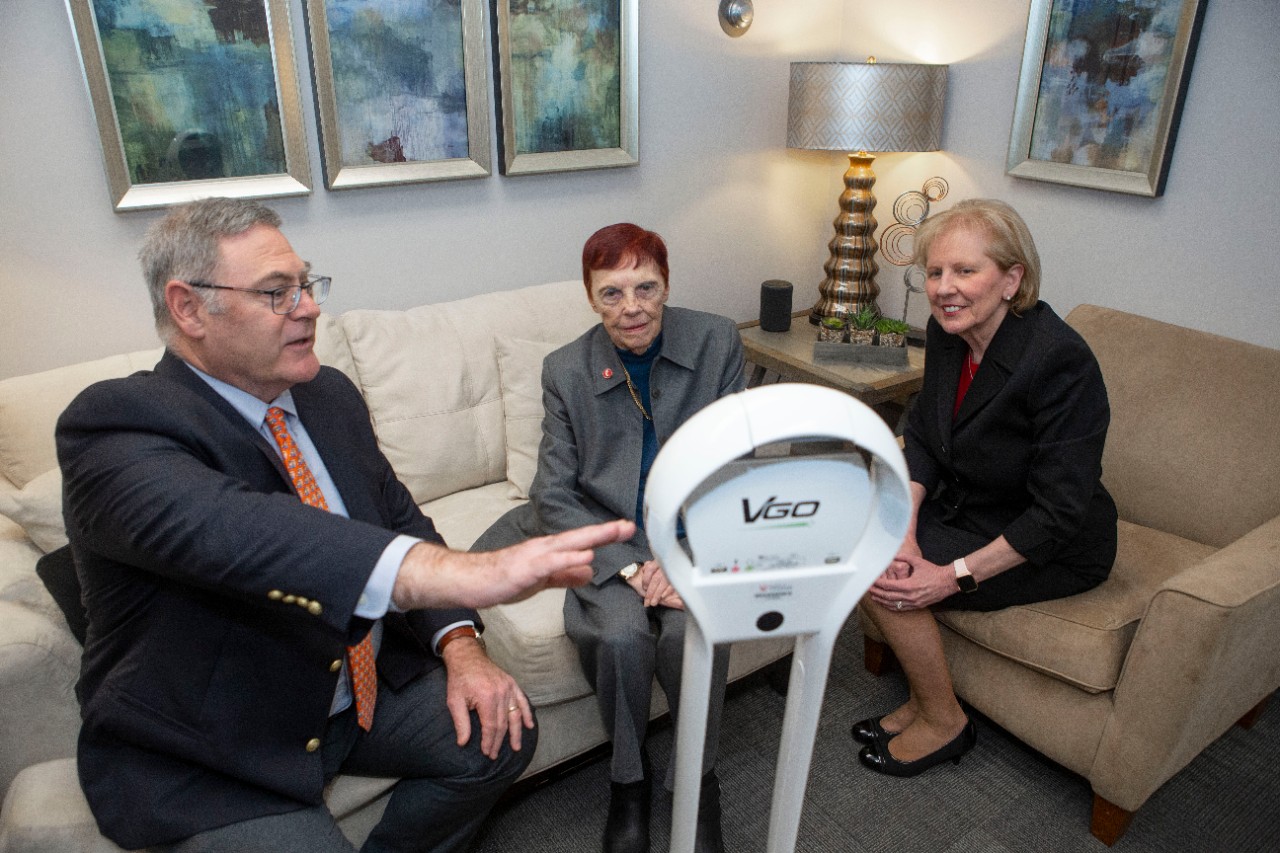
UC colleges collaborate on 'telehealth' certificate
Program aims to fill a gap in training professionals in this expanding and important field
Published research around the United States indicates a gap in training and readiness of professionals in the emerging field of “telehealth,” or the distribution of health-related services and information via telecommunication. It allows long-distance patient and clinician contact, care, advice, reminders, education, intervention, monitoring and remote admissions.
The University of Cincinnati College of Medicine and College of Nursing are collaborating on a graduate telehealth certificate program that will be one of the first interprofessional academic-based certificate programs in the nation. It is designed to prepare a highly educated cohort with the tools and educational experience to further advance individual careers while also filling a void in American health care.
“If a person has gone through a training program and has that knowledge, now they are a little farther along the line of being able to be better prepared,” says Charles Doarn, research professor and a program director in the Department of Environmental and Public Health Sciences at the UC College of Medicine. Doarn co-founded the program with Debi Sampsel, director of telehealth for the College of Nursing.

Charles Doarn and Debi Sampsel with a V-Go telehealth robot. Photo/Joseph Fuqua II/UC Creative Services
“Part of the objective here is not to have people pigeonholed into one particular discipline, but be multidisciplinary and interdisciplinary across the whole UC campus to build the collaborative nature of what we are doing, which is why partnering with the College of Nursing is a really cool thing,” Doarn says.
The curriculum will consist of four three-credit-hour online courses beginning with the 2020 fall semester. The two courses to be led by Doarn in the College of Medicine are “Introduction to Telehealth” and “Business and Operational Considerations of Telehealth.” The two courses led by Sampsel in the College of Nursing are “Telehealth Innovation and Delivery Models” and “Clinical Application in Telehealth.” In addition, individual courses will be available for graduate students to take as electives. Each course is evidence-based and follows a natural progression.
“This certificate program is a cutting-edge endeavor for health care providers, multidisciplinary team members and business associates seeking to expand their telehealth expertise and hands-on experiences,” says Sampsel. “The time is now to obtain the certificate as telehealth will continue to improve health care access, increase the reach to underserved areas and advance the integration of technology into consumer choice health care delivery.”

V-Go telehealth robot/Joseph Fuqua II/UC Creative Services
The program is just one prime example of the university’s commitment to innovation, one of the pillars of UC’s strategic direction, Next Lives Here.
Doarn says the certificate program will teach and reinforce concepts of telehealth to a wide variety of individuals, including physicians, residents, nurses, allied health professionals, information technology specialists, administrators and business associates on a wide range of topics, “from A to Z,” as he puts it. The certificate program will provide a solid foundation and will prepare participants for new challenges facing health care.
Admission criteria will include a baccalaureate from an accredited university or college with a graduating GPA of 3.0 or higher. One letter of recommendation from a previous teacher or a professional will be required, as well as a resume and a short goal statement.
“The university’s role, in my mind, is to educate the next generation of people, whether they’re chemists, poets, musicians, physicians, lawyers, pharmacists, whatever they might be,” says Doarn. “To be an integral part of the public health of the community, we want to integrate tools and technologies developed and taught online by recognized scholars and leaders in the field of telehealth.”
Featured image at top of Charles Doarn, Darlene Anderson and Debi Sampsel with a V-Go telehealth robot/Joseph Fuqua II/UC Creative Services
Next Lives Here, the University of Cincinnati’s strategic direction, defines our moment and our momentum. More nimble and more robust than a plan, Next Lives Here announces our vision to the world—to lead urban public universities into a new era of innovation, impact, and inclusion.
Related Stories
UC study: Brain organ plays key role in adult neurogenesis
July 2, 2024
The University of Cincinnati has published research in the Proceedings of the National Academy of Sciences that found the choroid plexus and cerebrospinal fluid play a key role in maintaining a pool of newly born neurons to repair the adult brain after injury.
UC’s microchip training includes innovative VR
July 2, 2024
To build a virtual microchip factory, University of Cincinnati doctoral students turned to the real one where they work. UC launched a new training program for microchip manufacturing in advance of the new fabrication plant Intel Corp. is opening in Ohio.
Cincinnati researchers want to know if MRIs can work better
June 28, 2024
WVXU and the Cincinnati Business Courier highlighted a new collaboration between the University of Cincinnati College of Medicine, UC Health GE HealthCare, JobsOhio, REDI Cincinnati and Cincinnati Children’s to create an MRI Research and Development Center of Excellence located on UC’s medical campus.
